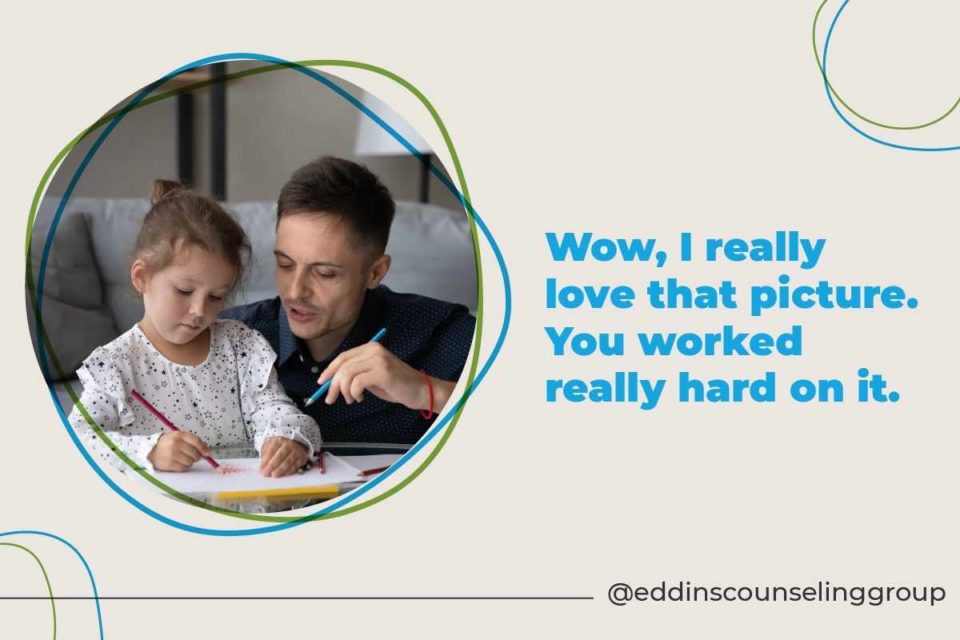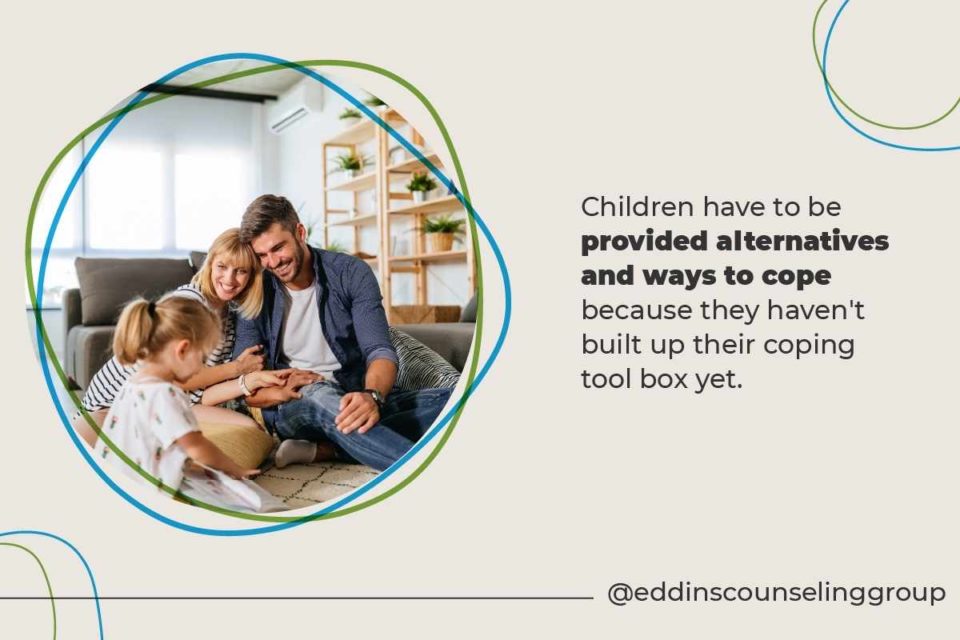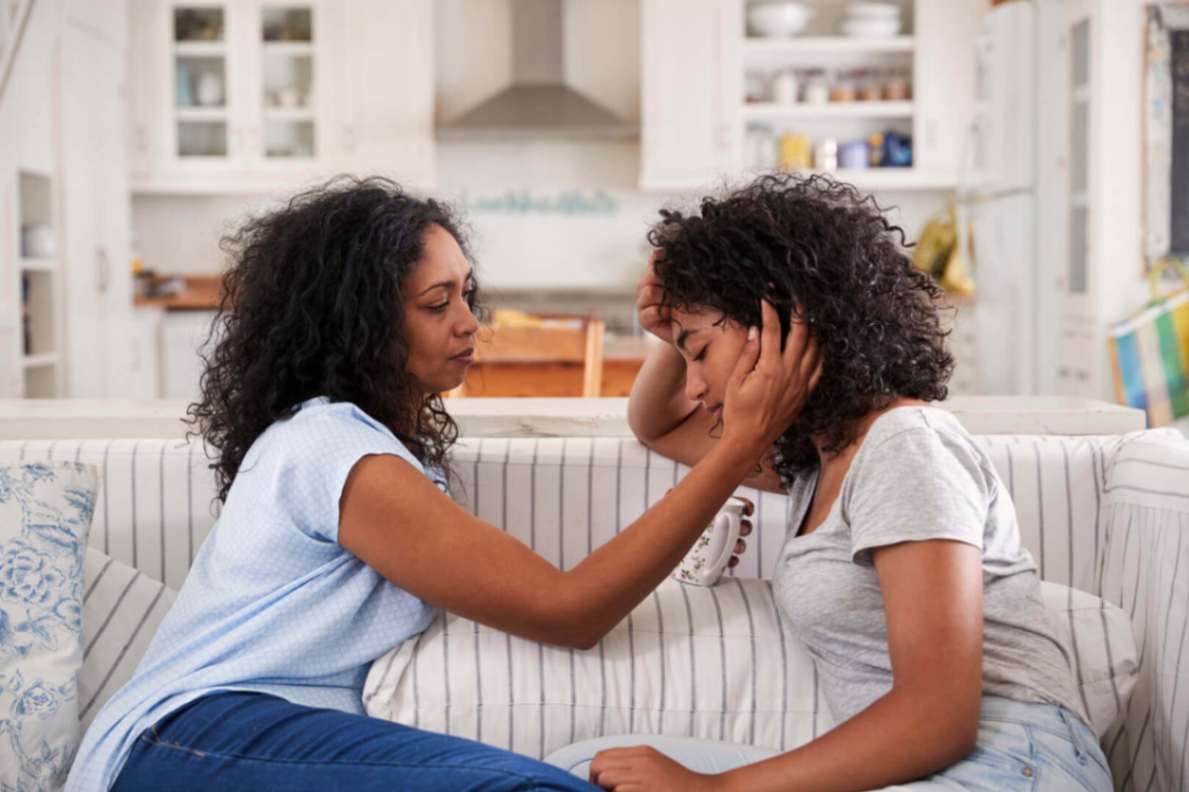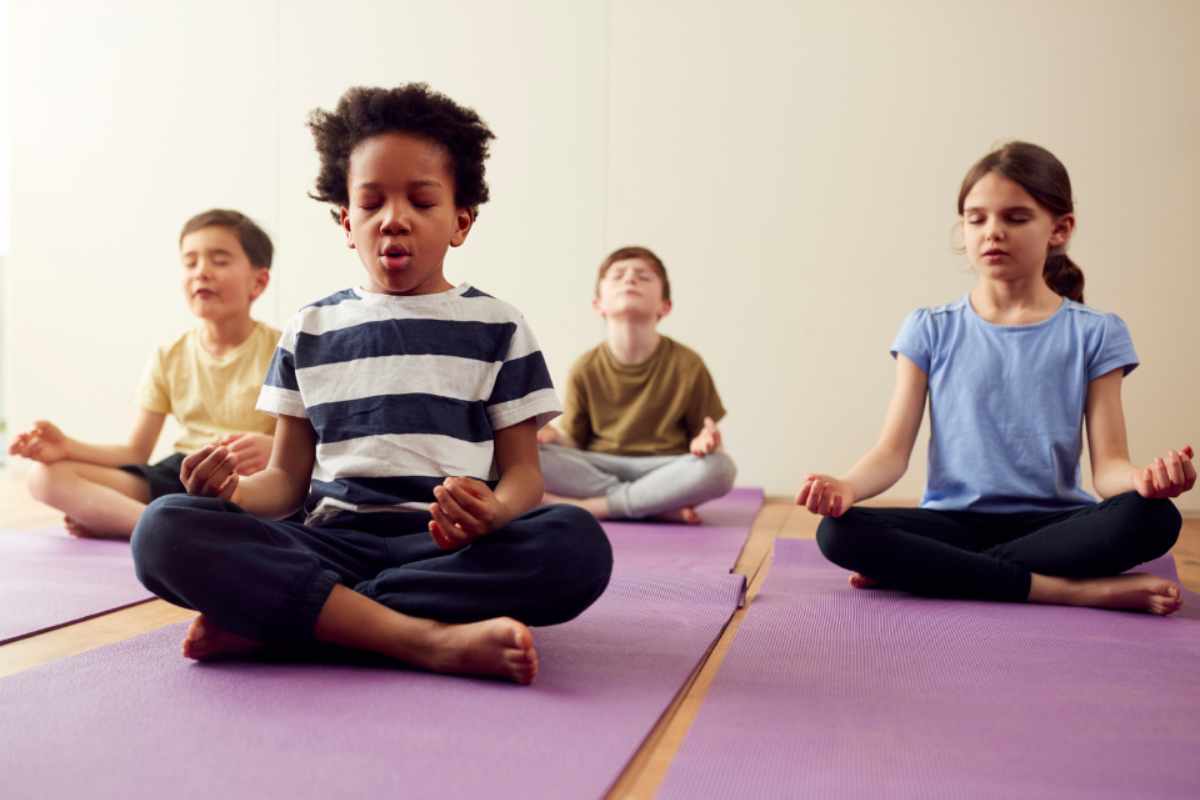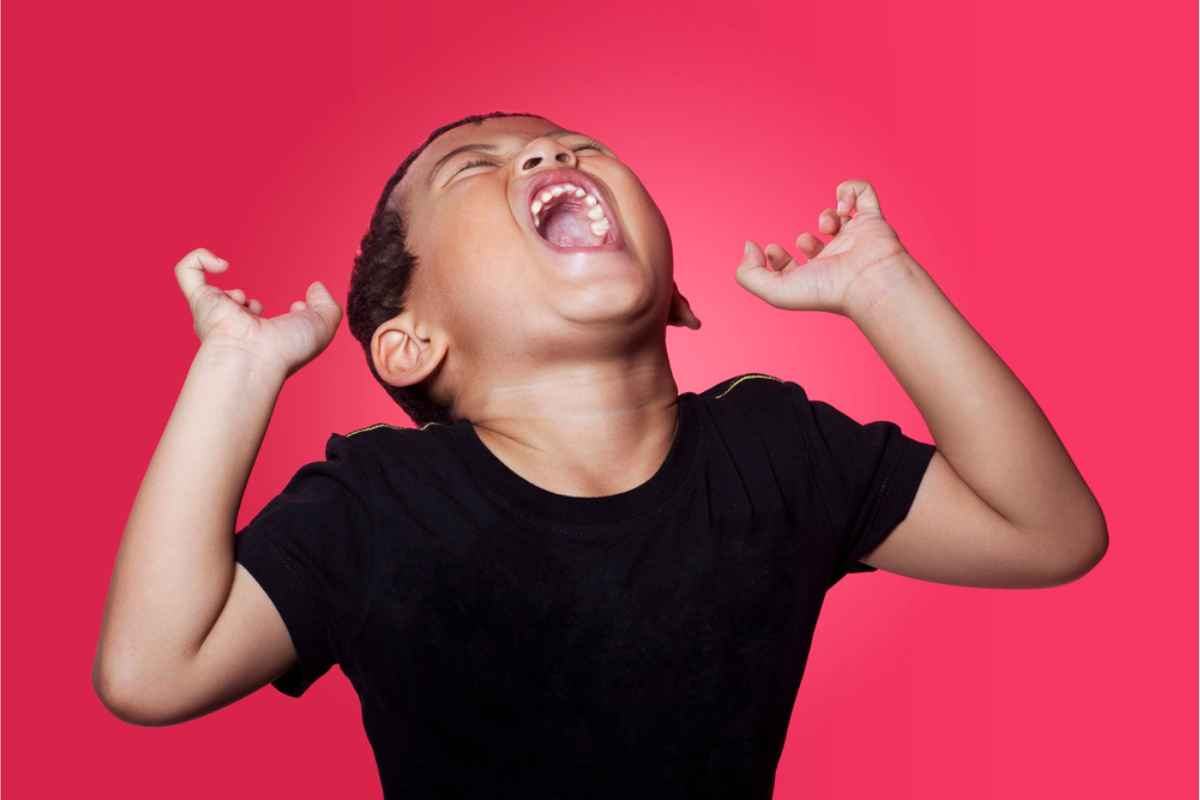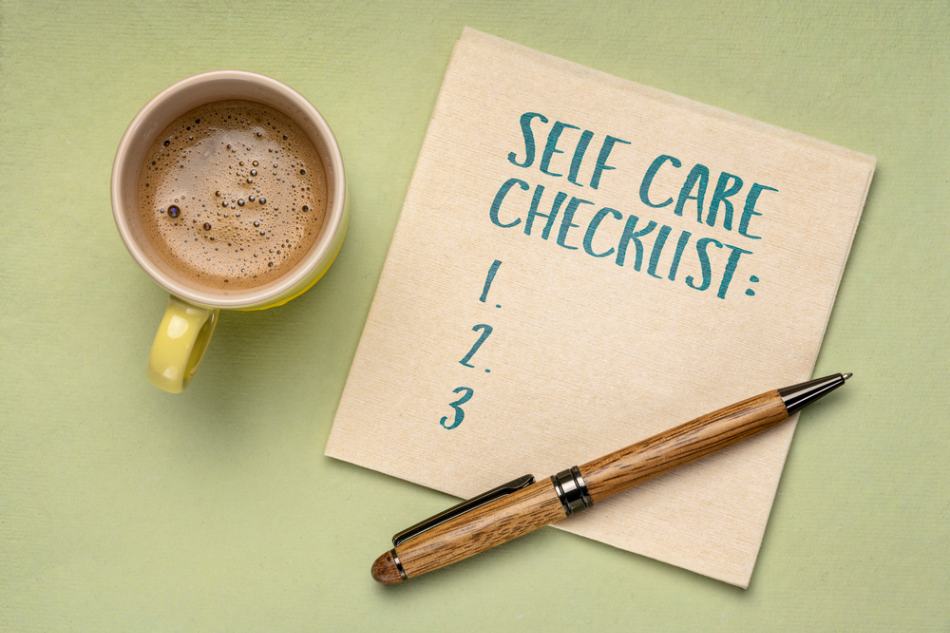January 1, 2021
Webinar: Tools for Strengthening the Parent-Child Relationship
Written by Rachel Eddins
Posted in Parenting & Family, Webinars and with tags: parenting

- Does it sometimes seem like your child doesn’t open up to you?
- Do you feel like you struggle to communicate effectively with your child?
- Or that you are often at a loss for how to respond to your child’s behaviors?
In this webinar, you will learn ways to connect and strengthen your attachment with your child through communication and relationship-building skills.
Facilitated by Sarah Agarwal
Watch a replay of the presentation here.
Learn more about Parent & Child Therapy Services

Welcome to this webinar on Tools for Strengthening the Parent-Child Relationship.
About The Facilitator
My name is Sarah Agarwal and I will be facilitating and leading this webinar tonight.
I just want to remind everybody that you can have your video off and remain muted throughout the presentation. There will be time at the end when I’ll take questions. If you would like to ask a question, you can add questions in the chat box. And then at the end of the presentation, we will be able to address all of those.
Let me introduce myself, I am a certified counselor and a licensed professional counselor associate under the supervision of Bonnie Mondragón. I am receiving or getting my Ph.D. and a doctoral candidate in counseling from the University of North Texas. My specialization has been play therapy as well as child-parent relationship therapy.
(Edit: Since this webinar, Sarah has earned her Ph.D. in Counseling from the University of Northern Texas)
What I’m going to be teaching and talking about today are the tools and the skills that I use in child-parent relationship therapy.
Parenting Skills
As a play therapist, I work with children across the lifespan. What I found is that I can provide therapy with an individual child and work with them, but sometimes it takes a little bit of time to build a relationship, build trust, and get that foundation.
If I can train parents the skills that I use in therapy and the things that I do to build a relationship with a child, and that relationship is already there with the parent-child relationship, then the benefits are just way more than I could provide in therapy one on one with the child.
All of the skills that I’m talking about today are things that I actually use in therapy with children, but that I’ve seen when parents use them with their own children, a lot of times, will help to decrease parent stress because parents feel like I have more tools in my toolbox.
Children’s behaviors decrease because they feel understood and seen in their world and the parent-child relationship just has more empathy, is stronger, and there’s more communication.
I’m really excited to be talking about this today. This is really where my heart lies. And so I’m excited to share this night with you guys. So let’s get started and let’s jump in.
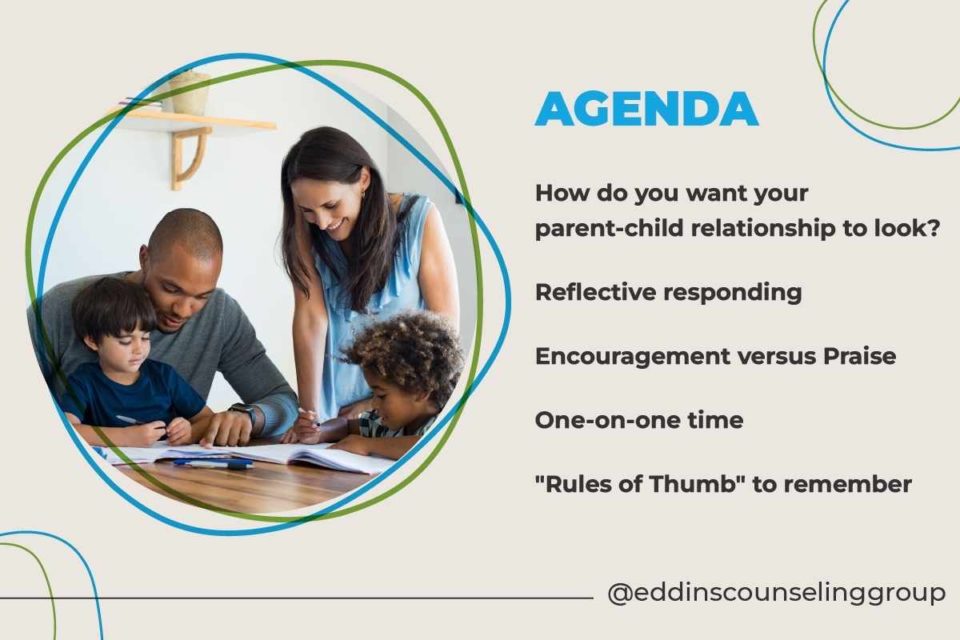
How do you want your parent-child relationship to look?
What does that mean to you? Because really, I can be here and I can share all of these tools and things, but really what’s important is that you find something that’s going to fit for your family.
I may be an expert in child therapy and in the use of these tools, but you’re the expert on the child, in your family. As I’m going through these today, something might work for one child and not work for another child. I’ve had that, too, where I use this skill with my oldest and then my youngest was not responding to that.
It’s important to try out different things, to figure out what works. We’ll start with kind of how you want your relationship to look.
Reflective responding
This is one of the main skills that I use in therapy.
Encouragement versus praise
What does this look like and how to use that with your parenting?
The importance of One-on-One time with your child
And then I’ll go over some rules of thumb which are like little sayings or slogans that I share with parents a lot when I work with them. That usually helps you to remember some of the things that we’re talking about today.
I’ll be talking about all of this stuff from “Child-Parent Relationship Therapy” which is by Dr. Gary Landreth and Dr. Sue Bratten. That’s really the manual that I follow.
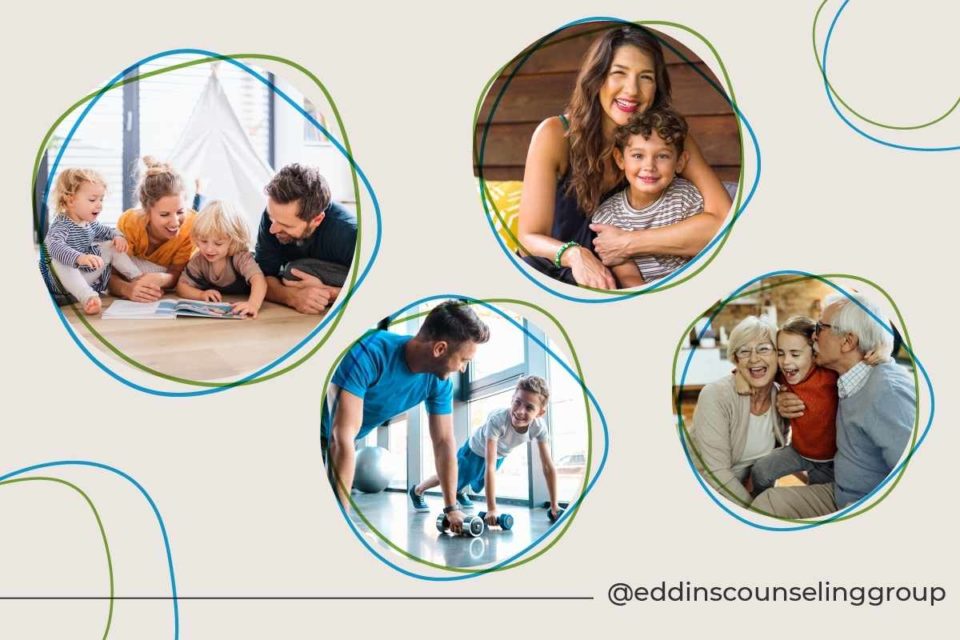
What Do You Want Your Parent-Child Relationship to Look Like?
Aren’t these nice pictures? Look at these smiling families, smiling parents, smiling children. I know that the parent-child relationship does not always look like this, but I wanted to start by saying, well, what does it look like? What do you want it to look like?
I want to take a little bit of time for us parents as adults to just think back to when we were a child. What did your relationship look like with the adults around you?
It could have been your parents, grandparents, aunts, uncles, teachers, kind of that one adult relationship that you had in your life that you felt was really special. And I want you to think about it for a minute. Usually, when I ask parents to do this, there’s a relationship that comes to mind. Usually, it’s: ”Oh, it was my grandma or it was my aunt or oh, it was this teacher in kindergarten that I had.”
I always ask, what was it about that relationship that made you feel special? Was it things the person said? Was it things that they did? Or was it the time they spent with you? Think about how you as a parent want to be that relationship for your child. That 20 years from now, your child is asked to do this and they think about you. They think about my relationship with my parent.
Sometimes, as adults, we lose sight of that or we don’t always think about it in terms of what really was special to us as a child.

Was it that I had somebody that I could always talk to? How can I be that for my child now?
How can I have that same type of relationship that was so special to me, with my child now?
Sometimes also think about what didn’t work, what relationships you feel like you didn’t understand. What did they do? You know, this sometimes gets us in the mindset of what’s my intentionality? What are the things that I really want to value with my relationship with my child?
The “Be With” Attitudes
As we’re talking today, it’s important that we talk about The “Be With” Attitude, which is what I like to share first, because it’s a state of mind, a way of being, a way that you are engaging within the relationship with your child.
-
I am Here
-
I Hear You
-
I Understand
-
I Care
When I’m engaging with my child, I want to be able to share that I am here. So that’s not necessarily mean I’m physically right next to you, but nothing’s distracting me.
I’m focused, and I’m fully present physically, mentally, and emotionally. So, I’m not just in the same room, but I’m here with you.
Next, I hear you, I am fully listening with my ears, my eyes. I’m seeing what you’re expressing, what you’re not expressing. So this is, for example, you bring the kids home from school one day and your child walks in the door, throws down the backpack, and just goes straight to the couch. I’m hearing what’s happening. “Oh, it seems you had a rough day, right?” It’s not necessarily what you said to me, but I’m attuning to all of the things that you’re telling me through your nonverbal as your expressions the way that you are.
The third one is I understand. So I understand what they’re communicating, what they’re feeling, what they’re experiencing.
And if I’m able to convey all three, I am here, I hear you, I understand then I’m conveying the fourth item, that I care.
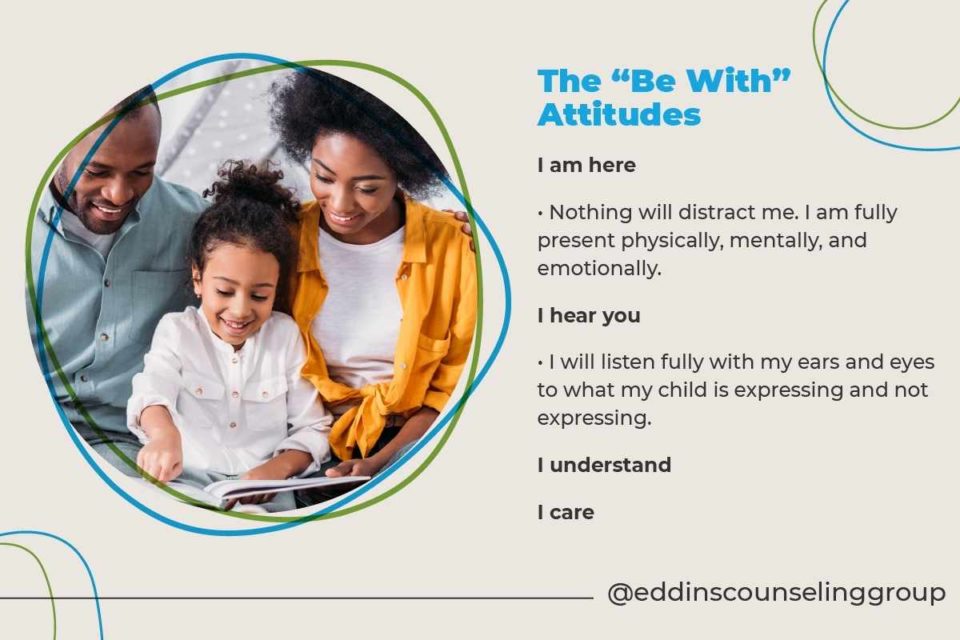
Help Your Child Feel Understood, Accepted, and Cared For
These are big, important pieces to help your child feel understood, accepted, and cared for. Seeing that helps to enhance the parent-child relationship.
It really all starts with this way of interacting with your child and recognizing that sometimes it takes intentionality of nothing distracting me:
- I’m listening… (I Hear)
- I’m fully attuning to you… (I am Here)
- I’m working to understand your world… (I understand)
- And then I’m conveying that I care. (I care)
Reflective Responding
Our first example that we’re going to go into, and this is really how you convey that third “Be With” attitude of “I care” is by reflective responding. Reflective responding looks like you feel mad, you feel upset, you feel happy, you feel surprised, you feel excited…
Your communication and understanding and acceptance of the child’s feelings and needs.
It’s really important to do this.
 I break it down for parents if, for example, you have the worst, possible day at work, whether it’s traffic, you are late for a meeting, or you’re due out. It’s just the worst, worst day. And then you walk in the door and you say you’re angry or upset and your partner or whoever is there tells you: “Oh, I told you, you shouldn’t take that route to work. Or your boss says: “You didn’t do your work on time.” And they were giving you these excuses. Is that going to make you feel understood, and cared for?
I break it down for parents if, for example, you have the worst, possible day at work, whether it’s traffic, you are late for a meeting, or you’re due out. It’s just the worst, worst day. And then you walk in the door and you say you’re angry or upset and your partner or whoever is there tells you: “Oh, I told you, you shouldn’t take that route to work. Or your boss says: “You didn’t do your work on time.” And they were giving you these excuses. Is that going to make you feel understood, and cared for?
Personally, your response will be: “You don’t understand, don’t get it. You make me so frustrated, you make me so mad.” And it’s similar with our children.
It’s important to show that even if it seems small for us adults, they come to you with: “This toy is broken” or a piece fell off their toy and they’re crying to know that for them, this is their world. They’re expressing this big feeling because it’s real to them.
Rather than saying: “Oh, you shouldn’t have been playing or you know that you aren’t supposed to be playing with that toy?” you should say: “You’re really upset about your toy. Let’s work together to fix it.” That’s how we would want to be responded. I’m validating and understanding and accepting that you have these feelings.
When we are reflective responding with our children, it’s important to make eye contact.
If my partner, when I come home was saying: “Oh, it sounds like a rough day”, but they weren’t even looking, they were looking in the fridge. Or I was talking to maybe my sister about something and they weren’t actually looking at me. It doesn’t feel the same, it doesn’t feel as genuine. It feels more dismissive.
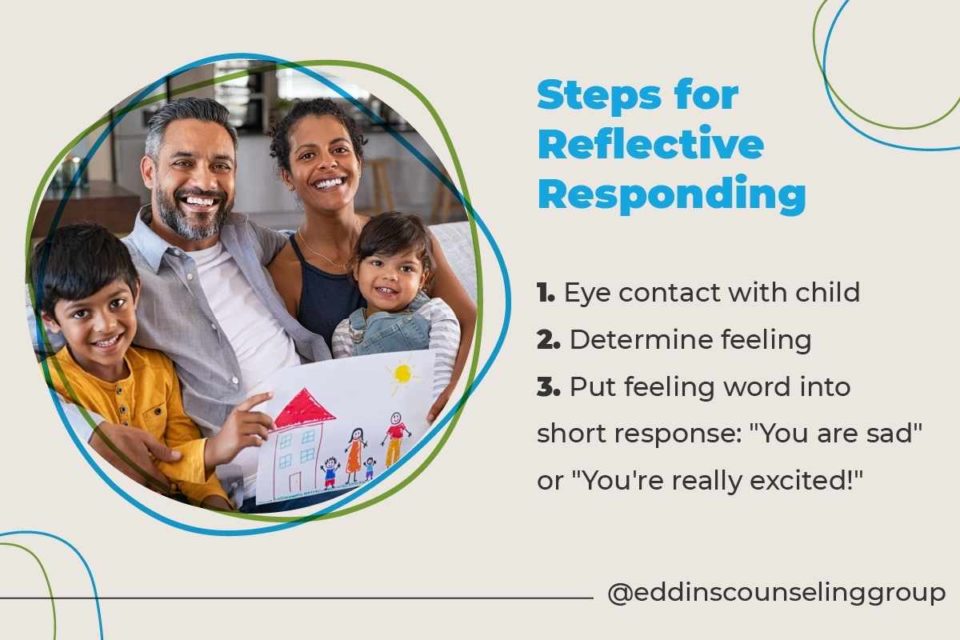
Steps for Reflective Responding
Making sure that I’m looking at the child also helps me to do that attuning. That I’m hearing everything that you’re saying. I’m looking at your nonverbal, I’m making eye contact, I’m showing you: I’m right here.
- Making eye contact with the child,
- Determining what they’re feeling,
- Putting that feeling into a short response, such as “You’re sad” or “You’re really excited”
I’m hearing everything that you’re trying to express to me and then putting that feeling into a short response: You’re sad. You’re really excited. You’re mad that you’re totally broke.
Reflective Responding Examples
With these examples, sometimes what I find is that parents, a lot of times seem to agree with the positive ones. “You’re really excited to see your friends today.” or “Oh, sure, I can do that.”
But what about the “You’re angry that your toy broke, you’re really sad, you’re upset, you seem frustrated.” Those are a little bit harder for parents to respond to, and a little bit harder for a parent to acknowledge.
And it makes sense that as a parent, you don’t want to see your child sad or maybe feel like if you are acknowledging the anger, it’ll get worse. And we’ll talk a little bit about that. But these are some responding examples and ways to use reflective responding in everyday speech.
I encourage you from this webinar to think of ways what is one reflection that I can maybe make to my child tomorrow or this weekend that uses you and some kind of feeling or some wish or some needs that they’re expressing to me.

Encouragement Versus Praise
When we talk about encouragement versus praise, we’re really talking about different things in different ways that it’s conveying meaning to the child.
Praise is: “That’s a beautiful picture.” or “I love that! You did so well on that.”
Praise tells the child what you think about their abilities and teaches them that self-worth is kind of based on what other people think or maybe what other people value whereas encouragement acknowledges the effort.
We’re really looking at the process, the way that they were able to do it, rather than the outcome.
We’re really wanting to help them build that internal locus of control, that motivation, that self-drive to say “I am capable. I know that I can do this.” rather than “I’m doing this so that other people like it.” or “It’s more important that other people like it rather than I worked hard.”
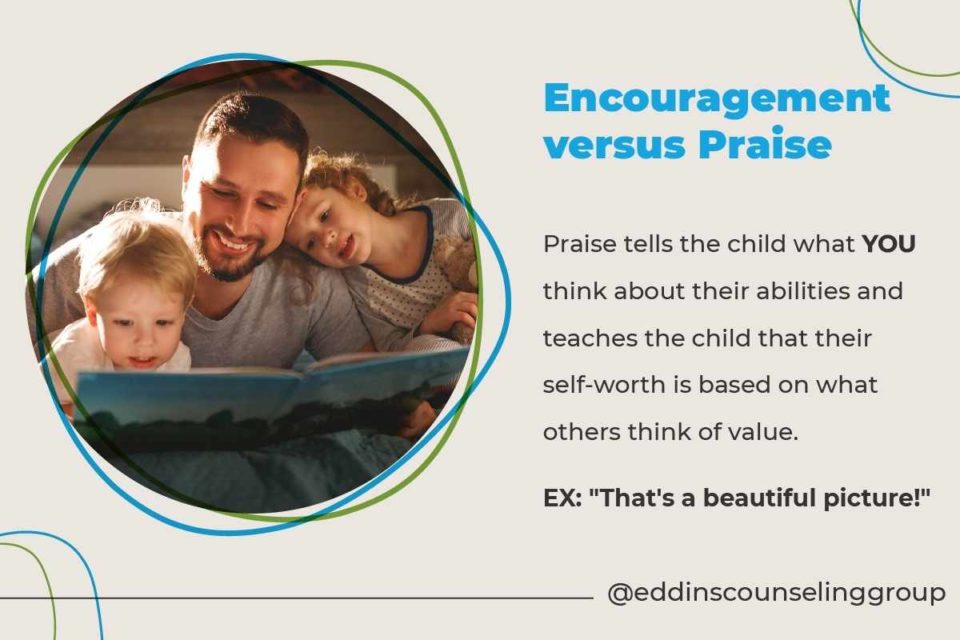
So you’re proud of yourself, you did it, you worked really hard, and you use lots of colors. And it’s hard to exchange those ways of saying it, because as adults, we’re almost trained to say: “Oh, wow, that’s a great picture”, especially when the precious child brings up this picture of a rainbow and says: “Do you like this?”
It’s kind of this automatic response of: “Oh, I love it. It’s wonderful!” The encouragement is really going to say: “Wow, you worked really hard. You wanted to show me that picture. You’re proud of yourself, right?”
It’s showing that there’s a different thing that you are validating and encouraging rather than the way that the picture looks. Because I have seen a lot of children’s drawings and some are wonderful, some are just spectacular and some are: “Oh, sweetie, that’s a sweet picture. You worked really hard on that picture, right?”
We don’t want to put a value on it. We want to put a value on the way that they were able to create something with it, the way they were able to make something, and their pride and their excitement of showing it to you.
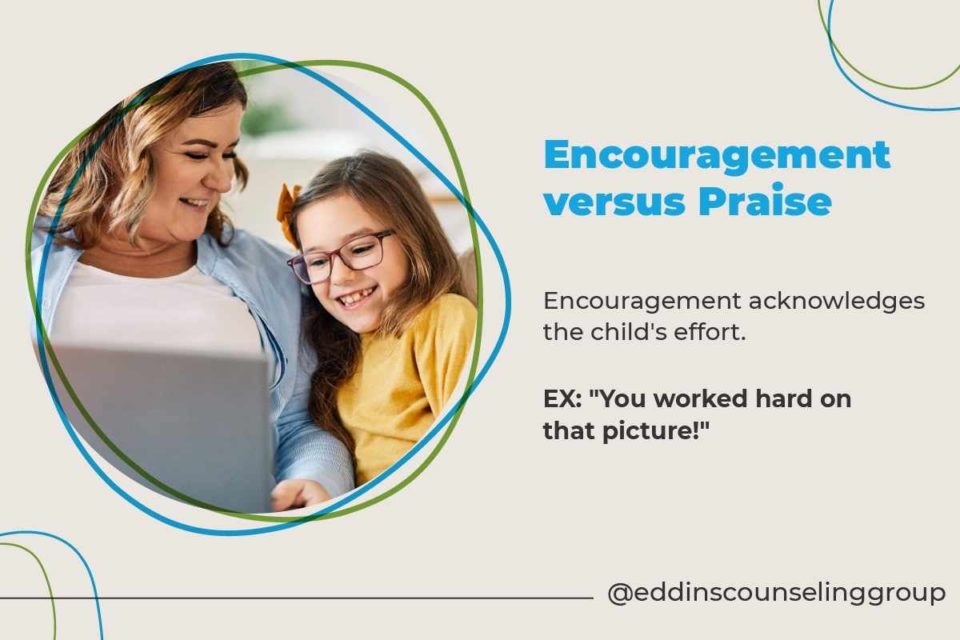
Other Ways To Use Encouragement
It’s always important to, and this is hard for parents, but when a child is struggling with something, it could be from when they’re really young, just starting to learn how to tie their shoes to when they’re older in middle school and they’re struggling with a homework problem, try not to jump in, try to kind of wait and see how they do it, to see what their response is to the struggle.
What if the child asks you to help them? Being able to be there to support them, but encouraging them to figure it out, encouraging them to try and do something new, or saying: “Oh, you’re really working on that? You’re not sure how it gets open… those kinds of things.
The encouragement phrases you could use there, especially if it seems like something they can do: “That seems like something you can do.” or “I think you might know how to do that”.
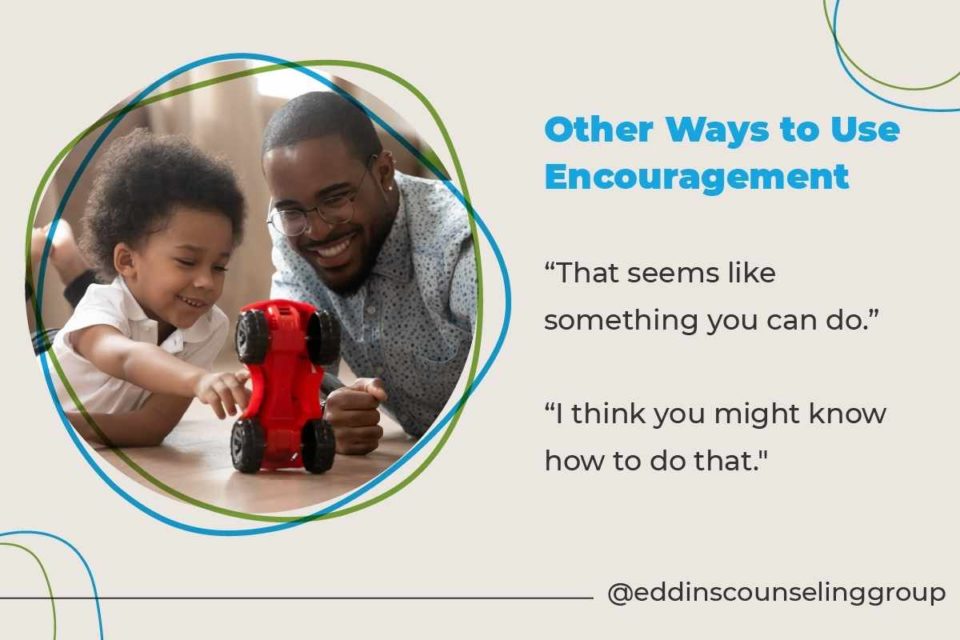
When it’s like a three-year-old and they’re trying to open something and you’re like: “You know, I don’t think they can open that. I don’t think they’re capable of opening”. Allowing them to help to show you what they want you to do. We don’t want them to struggle with something that they can’t achieve. We want to make sure that it’s something that they can do and that when they are able to do it, we say: “You did it. You figured it out. We’re encouraging that effort.
We’re encouraging that they had something that was kind of hard, but they didn’t give up.
And they continue trying and they figured it out. Ultimately, as parents, that’s what we want for our children. We want our children to be able to come up to adversity or struggle or something that’s hard. And for them to try, for them to put their best foot forward, to try their best to kind of have that effort and know that they are capable of succeeding.
That’s kind of a big picture for having them try to tie their shoes on their own. But we always want to make sure that we’re encouraging that. We do see the potential, we see how capable they are. Even if it’s something that they can’t do yet, we say: “Show me what you want me to do and we’ll do it together. I think that I believe in you and I’m here to support you and then do it together. “We figured it out. We got it. You knew just how to do that”.

One-On-One Time
What do I mean by one on one time? Well, I always encourage parents. If the child is between the ages of two and nine to have special playtime, and if we think about it as parents, how many times do I go and sit right next to my child and play? Not very often and not often without my phone. I’ve got my phone, I have the TV on and we have the computer right next to us. There are not a lot of opportunities and a lot of intentionality in terms of I am wanting to be as fully present and engaged in this play, in this environment, and in this experience with my child.
One of the tools for strengthening the parent-child relationship is just spending time with them.
But it’s important that the time is “no distractions“ and “child lead” so the child is choosing what to do.
So it might be, for example, they’re four and they love playing dress up. That’s what we’re going to do. We’re going to have our special playtime, and I’m not going to have my phone. We’re going to have no distractions and I’m going to play dress up with my child because that’s what they want to do.
So it’s allowing them to show you what they’re interested in. You’re conveying that the thing that they love and enjoy is something that you want to do with them. That you enjoy spending that time with them as well. It conveys interest in this child. And so, it conveys that you’re valued, accepted, and understood.
As an adult, I recognize how much better I feel when I spend time with a friend or I spend time undivided attention with my partner or with somebody that I know just loves me and somebody that maybe is my person or even if it’s calling a friend on the phone.
Think about how much better you feel after having that time, after being able to share that space with somebody and to be able to talk about things that are going on for you or to laugh or to just have fun or, how special it would be if you said: “Oh, I have to run some errands” and your friend says: “I’ll go with you.”
It’s not the funnest, but that friend is willing to be with you because that’s something that you need to do or that’s something that you want to do.
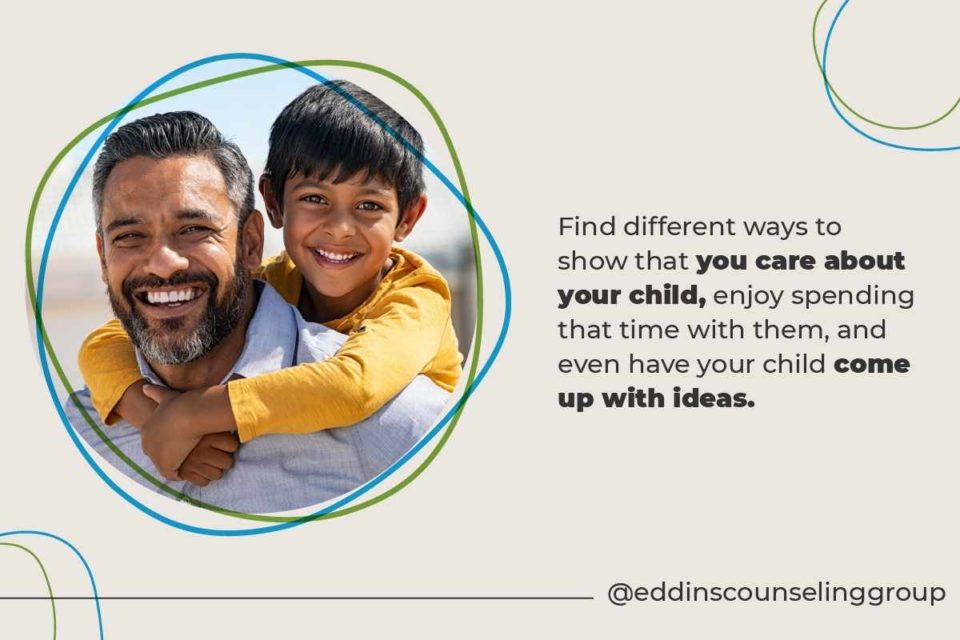
You can be that person for your child
And I know a lot of times it seems simple, but it’s a hard thing to do as parents. It does take intentionality, and really being mindful about the space that you’re in with your child and making a plan to do that with your child.
I talked about playtime. If you have a child that’s older, so between the ages of nine and above, having time to do what they want to do. For example, your 10-year-old wants to do some baking or they really want to play board games together or they maybe want to go outside and play catch or basketball. Allow them to choose the activity and do it with them, and spend some time with them.
I think back to my own childhood and those were special moments for me when we did things together with my parents. I remember them being busy, but they would still come outside and play with me or we would still eat dinner together. So knowing that in this moment, your child might look back on this and think of all those times and think of how special that was with you.
This is very conveying those “Be With” attitudes of: “I’m here, I hear you, I understand and I care.”
Common Parent Thoughts

I’m going to address some common parent thoughts, and these are things that I’ve just gotten through the years working with parents. Some things are kind of hesitations or questions or, not sure about things and how they will work.
Parents sometimes ask: “If I reflect that my child’s angry, will this make them angrier?” That’s a concern because when there’s anger, a lot of times there’s escalation, and a lot of times that comes with behavioral outbursts, tantrums, having to set limits, or power struggles. And usually, that’s the main concern for parents, the feeling of anger.
I’ve worked with so many parents who almost tiptoe around that because it feels so volatile. It feels like it’s going to happen at any moment. I think reflecting feelings to children, is not only just positive feelings. We can reflect all: you’re so excited. you’re so happy to see your friends.
Reflecting on all the feelings shows that these feelings are valid and that people feel angry sometimes and it helps them process and label what they’re feeling and communicate and express their feelings.
I know that if I’m angry and I tell somebody how I’m feeling and they tell me to calm down, not yell, or tell me to stop being angry and just think about something else, that makes me angrier. It escalates. That happens with children all the time. When you’re not feeling like you’re being hurt or not feeling like you’re being understood, a lot of times the feelings feel like they’re getting bigger.
I always tell parents: “You’ve been setting limits this child’s whole life. So you know how to set limits”. But adding in the feelings, and adding in that reflection of “I know you feel really angry or I know you feel really sad” and allowing your child to know “I hear you” and “it’s okay to feel angry” and then setting the limit of “but it’s not OK to do these behaviors” or that “it’s not okay to do this”.

Small Changes Can Make a Difference
We’re so busy, I don’t think I have time for special one-on-one time, and so I always say even small changes can make a difference. It might be we’re waking up early this weekend and having a pajama pancake party, the three P’s. PAJAMA PANCAKE PARTY.
“We’re going to make pancakes and we’re going to have our pajamas and we’re going to have a party and eat breakfast in bed.” We’re already making pancakes. You’re already making breakfast. But the way that you are saying it’s unique, it’s special. It’s something fun.”We’re going to laugh. We’re going to enjoy being together. Our phones are going to be away.”
These small changes can really make a difference. We can really make it feel intentional and feel special for the child.
And sometimes it takes brainstorming. How can we do this? Or, I’ve worked with families where they divide and conquer. One parent takes one child, and the other parent takes the other child. And you just spend some time with each child and in the next week, you switch kids.

Sometimes you have to be creative. Sometimes you have to think of “I have a little bit of time with my child driving home from school. Maybe we’ll make it a music dance party day.
“We have this 20-minute time where we’re driving home. What would you like to do? Do you think maybe we should listen to a book together, maybe an audiobook, or do you think we should listen to music together?
Allowing the child to have some autonomy that can also really help to make it feel special and make it feel like you are doing all of these things to try to. Understand your kid or show them how much you care.
It’s hard to use encouragement instead of praise. I’ll have parents who will say: Oh my goodness! My child brought up their picture and they said, Mommy, do you like it? And I said, “Oh, it’s lovely. I love it.” I thought, oh, my goodness, that’s not what Sarah told me to say. So, I said: “You know, sometimes that happens.” What’s important is you recognize and try again.
So the next time the child says: “Mommy, do you like this picture?” Say: “Wow, I love it” and then follow it with praise or follow it with the encouragement of: “Wow, I really love that picture. You worked really hard on it.” You wanted to show me that picture, use lots of colors, you can use them together.” And it’s important to find what fits you and not feel like you have to change everything at once. Small changes are going to make that difference.
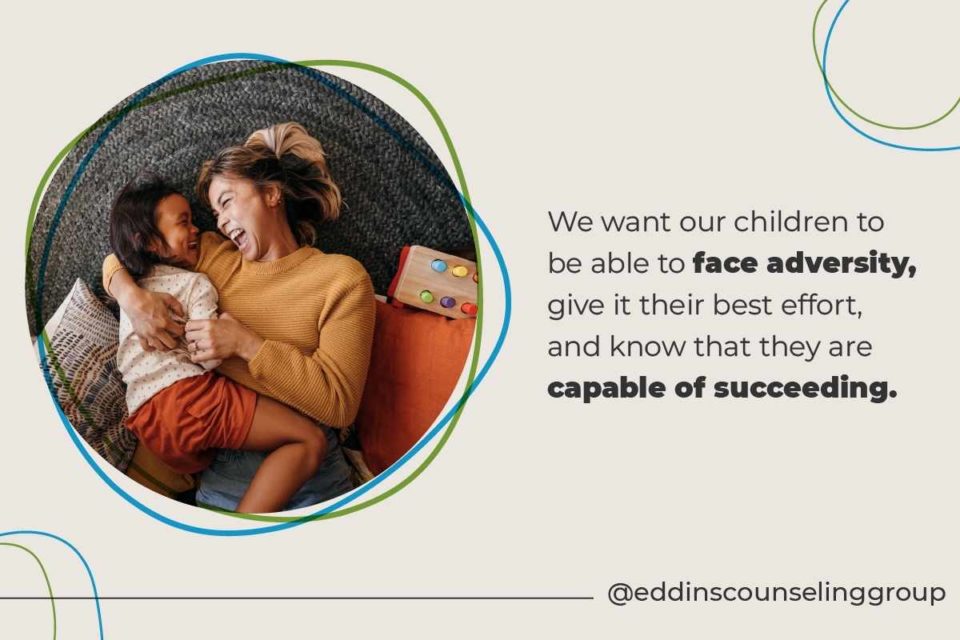
“Rules of Thumb” to Remember
Here are some “Rules of thumb” to remember. These are just fun, but they’re really going to focus on what we’ve been talking about today and the main point of this webinar:
Focus on the donut, not the hole!
I always imagine if I was going to have a donut, it would be the size of my face and it would have chocolate glaze and maybe some sprinkles and cookie crumbles. If I focus on the donut, I see all of that, of the gooey, the sweetness, the goodness, the things that make me so happy. I don’t look at the whole, I don’t see the thing that’s missing. I don’t see the problem, I don’t see that hole.
And so when you’re thinking about your child, it’s important to try to focus on those good things. Those wonderful things that make you smile, that make you so happy, and not the problems, not the things that are missing. Sometimes even just switching that or even just remembering all of those things that you love about your child and seeing those things can really help the way that you respond. Responding in a more calm way, responding in a more empathic way. I don’t always eat doughnuts like that, but I’m just saying, for this example.
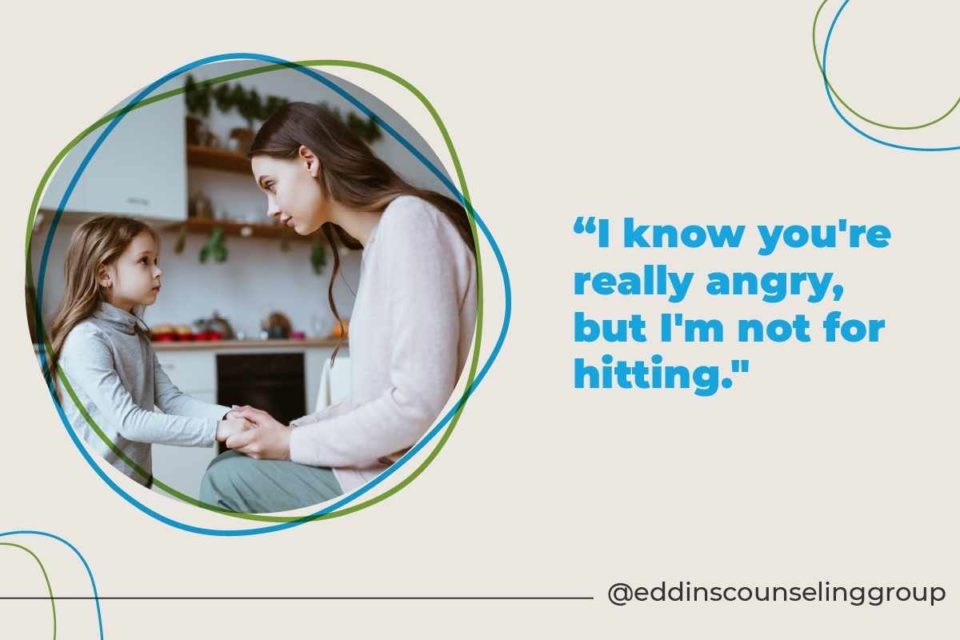
Be a Thermostat, Not a Thermometer!
If you think about a thermostat, it adjusts the temperature to regulate and make sure that the temperature maintains the same or stays the same. And, when the temperature rises, the thermometer measurement rises, too.
So, let’s say you’re in a situation with your child, and your child is escalating. Remember to be a thermostat. Do what you can to maintain your calm, your feelings, and the things that are going on for you. Your stress is not raising with your child, but you’re working to be a thermostat, to adjust, to regulate, to say: “Let’s see if we can get everybody on the same temperature right now.”
A thermometer means: “My child is getting angry. I get angry.” So making sure that you remember that my feelings are different from my child’s and it’s important that I work as well as I can to understand and be that thermostat. And I love this one. I use this one as an adult.
What’s Most Important May Not Be What You Do, But What You Do After What You Have Done
So really, what this is getting to is that we all make mistakes as parents and as people. We make mistakes and what’s important is not always the mistake that we made, but what we do afterward.
Or: “Oh, I should have said this, or I said it the wrong way.” What’s important is what you do after you make a mistake. Being able to say: “Oh, I said that wrong” or “I recognize that I yelled when I shouldn’t have”. Being able to own that.
I think back and I don’t think kids here, adults apologize very much. It’s not something that I think happens a lot. I think it can be a really great way to model what it looks like to say: ”You know, I make mistakes sometimes and I think this was a mistake and I wish I could have done it differently. And I’m sorry.”
That lesson, that modeling that shows that you care so much about the relationship and care to repair it can be really meaningful for a child. It can really show empathy and understanding and model all of those things that we really want for our children.
Encourage the Effort Rather Than Praise the Product
This is really going to our use of encouragement. Overpraise!
Can’t Give Away That Which You Don’t Possess
So this is kind of that analogy with the oxygen mask on an airplane. Now, it’s been a while since some people have been on an airplane, but you remember the safety rules and it says there will be an oxygen mask that drops if the air cabin pressure goes off. And they always say: “Put your mask on yourself before you help put a mask on a child or help yourself before you help the person next to you.”
And so really, when we’re talking about this and we’re talking about being that fully present, that deal with the attitude of “I’m here”, it takes some mental energy. It takes a lot from us as a parent to be able to provide that to a child. Making sure that you are doing things to take care of yourself, the things that you need to do.
When I have parents schedule their special one-on-one time with their child, I always ask: “Will you say that you want to schedule it for Wednesday at five o’clock? What are you doing right before that?” And they might say: “Oh, we walk right in the door at five.” Then, this may not be the best time to have our special playtime. If we’re walking in the door and we’re having everything happening from the day, the scene of things getting dropped off, and we’re rushing or moving. It’s not a time that maybe you can be available. A time that you can be calm and regulate yourself to be able to tune in and convey that understanding to your child.
Always recognize that you have to be in that space and you have to be able to provide that for your child. That’s kind of that rule of thumb.
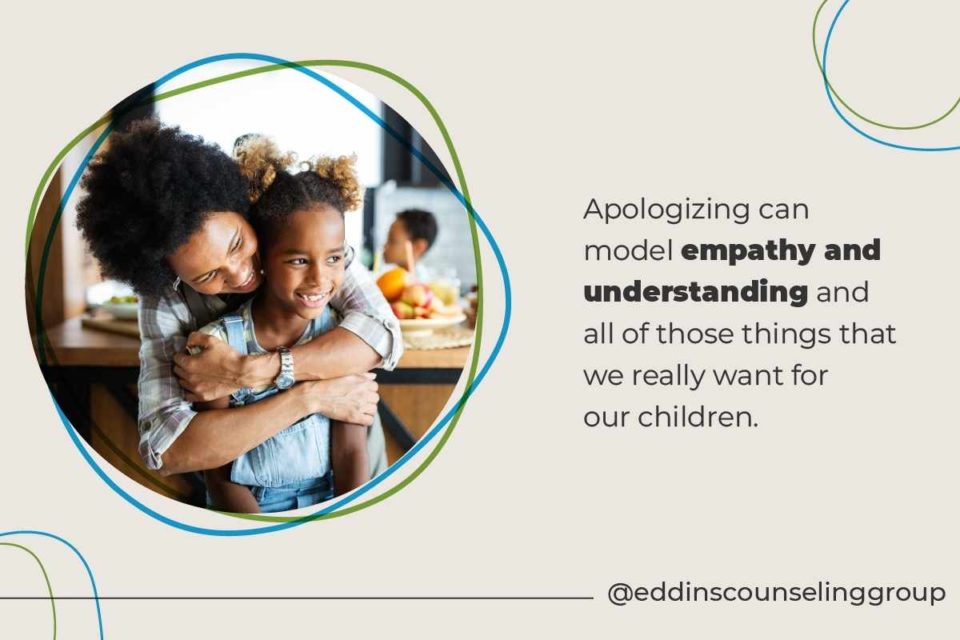
Don’t try to change everything at once
Sometimes when I work with parents and I was very mindful of this presentation, parents are being told parenting advice before the child is even born. And so I wanted to make a presentation to help share these skills and share these tools, but also not want to overwhelm and not wanting to say that these are all the right things to do or this is what you should be saying or this is how you should be doing. I wanted to provide more tools for your parenting toolbox.
So don’t try to change everything at once if there’s even a little thing or small thing that you can do a small step towards trying to focus more on the relationship or a small change of giving an extra hug for your child that day. Those are the things that are really going to add up and be really special for each of you, for the parent and the child.
Recommended Books
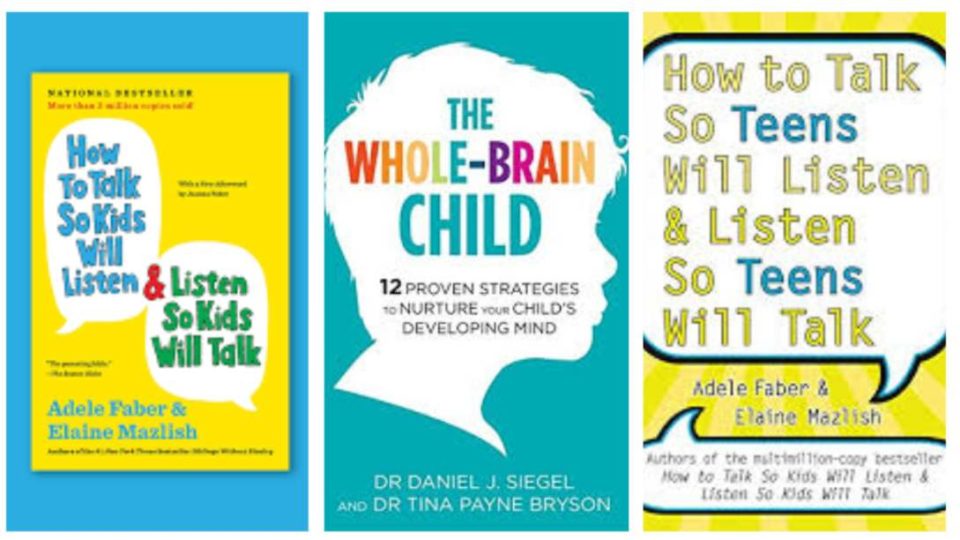
For Parents with Young Children
We recommend some books and I’ll see I’ll go check the chat box and see if there are any questions. So I like a lot of these books, for example, “Here’s how to talk so kids will listen”. This book was written by two parents who are also mental health professionals. And the way that they write it is with a lot of examples from their parenting struggles. They use comics, which is great. I will read this for fun because you get to laugh a lot. That’s happened to me.
So this one’s a really great read. It’s really easy to read. It goes through a lot of the different steps and talks more in detail about some of the things that we talked about tonight.
For Parents with Teens
They also have the same book as teens. If you have a child that’s older, that one’s also really great, has the cartoons and the comics as well. And it puts into perspective some of those relational things, how to respond and how to encourage active communication between your child, which is the basis and foundation for a really strong parent-child relationship.
The “The Whole-Brain Child” is also really good. This book actually looks at more of the normal development and what’s happening in your child’s brain and how the ways that you are responding as a parent can help to strengthen their neural pathways, can help to increase activity in the brain, and really help with that cognitive development, social development, and emotional development. This one’s also a really interesting read, it talks about the developing brain and how to encourage growth there.
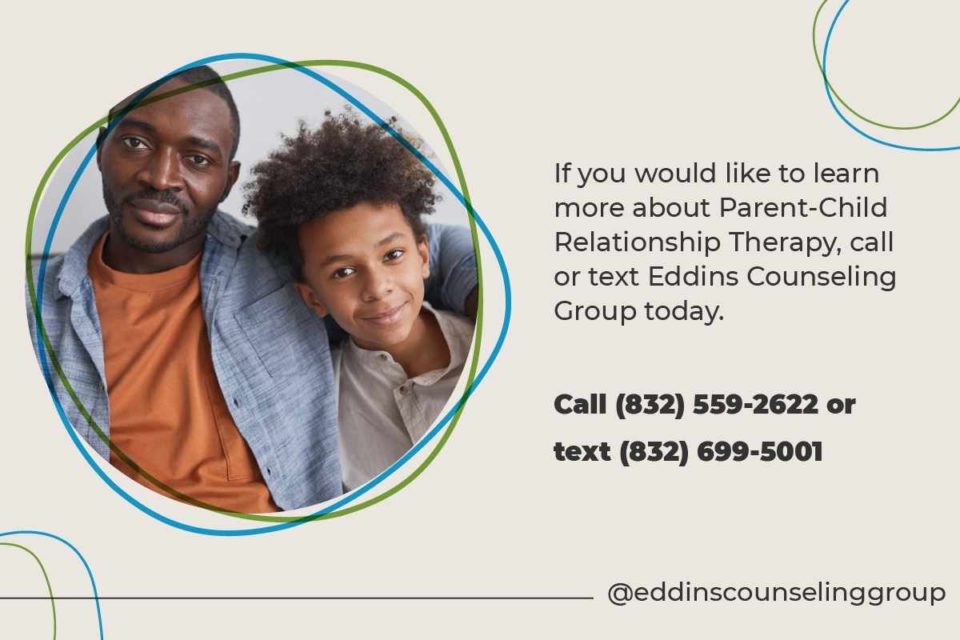
Questions
Are there any questions or thoughts that y’all are having? I would much rather have more of a discussion than kind of a lecture feel.
It’s hard to apply this information when you’re not on the same page with the other parent
I agree that sometimes what can be helpful is making sure that both parents are on similar pages. But what I also like to share with parents is that I have examples from when I have therapy with a child and I’m working with this child once a week for maybe thirty, forty-five minutes and I’m doing different skills with the child then the parents are doing it’s still beneficial because they still feel “I’m understood, I’m valued, I’m seeing within this one relationship. And because of that, I feel capable. I feel like I can do things, I feel my behaviors will start to shift.”
I always say that if a therapist who doesn’t have a relationship with the child is able to use some of these skills, even when the rest of their environment doesn’t change, it can still be beneficial and can still really help the child.
So I always encourage, even if there is one parent or one adult that’s able to provide that environment to provide that relationship for a child, it’s going to be beneficial and it’s going to be so special for that relationship.
I understand that sometimes it does feel frustrating when you’re trying one thing and the other parent is on a different page, or I even have parents who think they’re on the same page, but they’re really not on the same page and that can be frustrating as well.
I love to hear any feedback that you have for me. I’m continuously working with parents. I do parenting groups. I do individual work with parents as well as play therapy. So any questions or anything, feel free to reach out and provide any feedback.
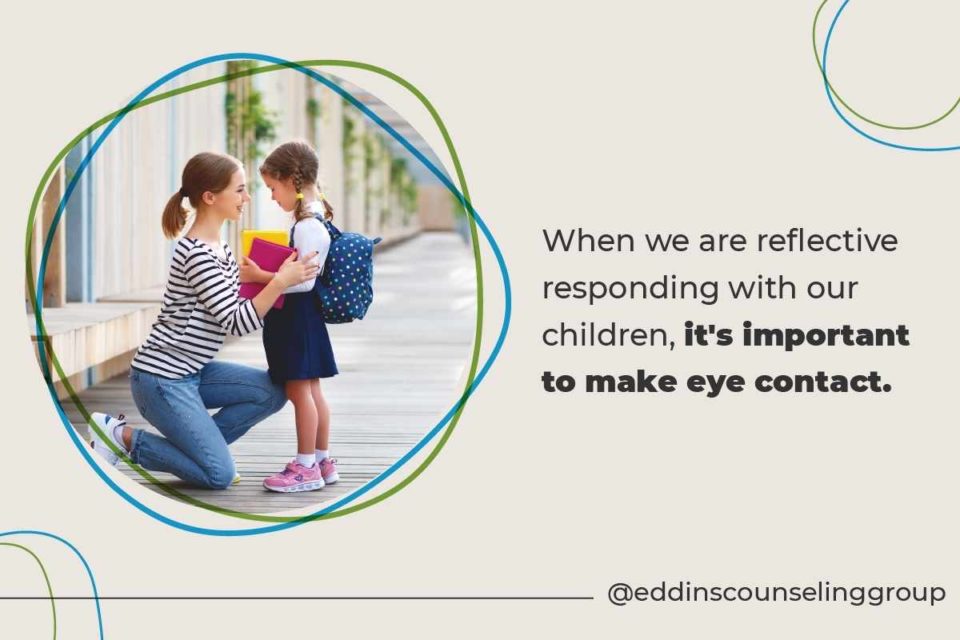
What would you recommend the tools to be when you’re trying to implement an intervention if the parents have their own mental health problems?
So this seems like, from more of a therapy standpoint, it sounds like our mental health standpoint. I think everybody, especially with the covered pandemic, parents are struggling and it’s hard to always do some of the skills or attune. And I think sometimes what’s helpful is small steps and really building that relationship with the parents. When I work with the child in therapy and see what is a small step and this webinar, this workshop kind of had a list of things to kind of pick and choose from. But usually, I definitely assess what’s the family’s need, what seems to be the main issue or the biggest issue that’s affecting everybody, and what are small changes.
What are small things that we can do? I still maintain my same intervention in play therapy with the child, but bringing the parents in on what are some small things, what are ways, or even “here is something that I’m doing with your child that seems to be helpful”. What would it look like for you to try it sometimes?”
I know that parents struggle and I do believe that children are resilient and children are strong and capable. If a child is providing a relationship that is validating and accepting that’s either with me as a play therapist or with another adult in their life, they will be able to find that resilience and overcome things that are happening around them.
Theory or foundation of play therapy
My play therapy is focused on child-centered play therapy and the way that I work with parents is through child-parent relationship therapy. This is really a manualized treatment by Dr. Garry Landreth and Dr. Sue Bratton.
My son is six years old, and when we allow him to do something, he pushes the limits. We say yes. Then we say no. And in the end, we yell. What do you think about yelling?
I think it happens. As parents, some days we are the thermometer, where we’re already right here and our kid comes in and is wanting something, and sometimes yelling happens. And I think it’s important to recognize that what’s not important is not always what you do, but what you do after what you did. And we might say: “I realized that I yelled, I shouldn’t have done that.”
As a parent, to kind of model that I was trying to communicate that I was angry, but I yelled, I also do teach parents therapeutic limits setting. Therapeutic limit setting is a three-step process. So it starts with acknowledging the feeling, which is part of the reflective responding that we talked about today, where you’re feeling really angry or you’re feeling really upset or you’re feeling really mad but I’m not for hitting or yelling. But the toy is not for breaking.
You can help them to find alternatives. So as adults, we recognize that when we’re angry, there are ways that we can cope. We go outside, we take a walk, and we listen to music. We’ve learned how to use our coping skills as adults, but children don’t know.
And so sometimes it can be helpful: “I know you’re really angry, but I’m not for hitting. You can go and hit the pillow or you can go and push against the wall”. I’ve done wall pushes with children before. It’s showing that it’s okay to feel angry, but the behavior is not okay. So let’s work together to figure out what behavior you can do to kind of get some of that anger out or to express that you’re feeling angry. That’s the three-step limit-setting process.
I’m providing you with tools and things that I do in therapy that help to build the relationship. It’s not always going to work for every kid. A lot of times when I work with parents, we do individual approaches to figure out what’s going to be the best. And how did that work? Let’s tweak it. Let’s figure out something else.

Do you think it would be a good idea to applaud the effort, not product approach to the potty training of a two-and-a-half-year-old boy?
That is a great question. And so I will say that potty training is a really, really big deal for children. A lot of times this is the first time they recognize they have some level of control over something. There’s also the potential for shame. There’s the potential for autonomy and a feeling of independence. And so it’s important to really use encouragement, if you can, during those times.
And have empathy. If the child is struggling, recognize that it’s hard sometimes, but that they’re really trying and say: “You can try again next time, or let’s see if we can figure it out. Let’s do it. Let’s work together.” But it is very important, especially during that age. That’s really the first time that children start to learn whether they’re capable of something and start to feel really proud about something.
My husband likes to play adult music around the kids. Is it a bad idea?
I think toddlers sometimes soak up words, but they don’t always know the meaning of words and they don’t always know what it is. I think having conversations about this music we really like to listen to, and if they do pick up on that specific word that they don’t you don’t want them to be saying around the grocery store, having a conversation about that word and about this word means something that we don’t say it.
You know, I think it happens. Kids are sponges and they’re going to pick up on it, specifically all of those things that you don’t want them to pick up on, no matter even if you aren’t having the music playing around them. I mean, sometimes that happens, it’s not necessarily bad, it’s just being mindful that that’s something that you may have to have a conversation about. I’m being open to it.
I’ll put my email in the box too. If you are ever wanting to reach out to me personally. Again, thank you guys for coming. That’s all I have for you tonight. And it was just a pleasure to be able to be here and talk about one of my favorite things.
To learn more about Sarah Agarwal, PhD, NCC, LPC, RPT, click here.


